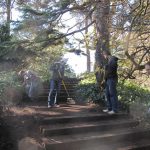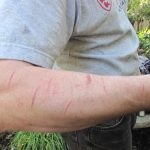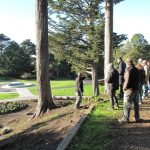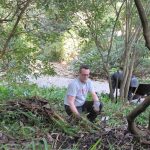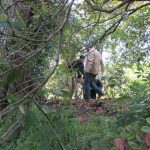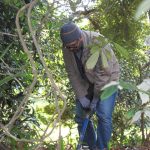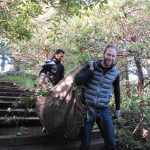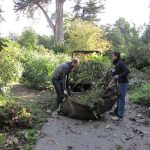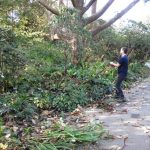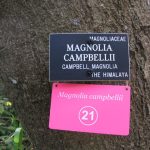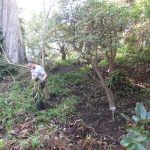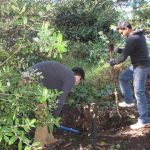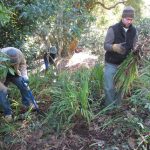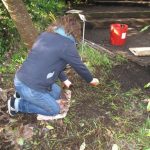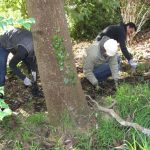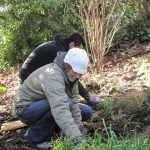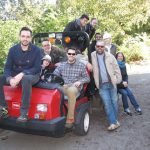Golden Gate Park’s Middle Lake
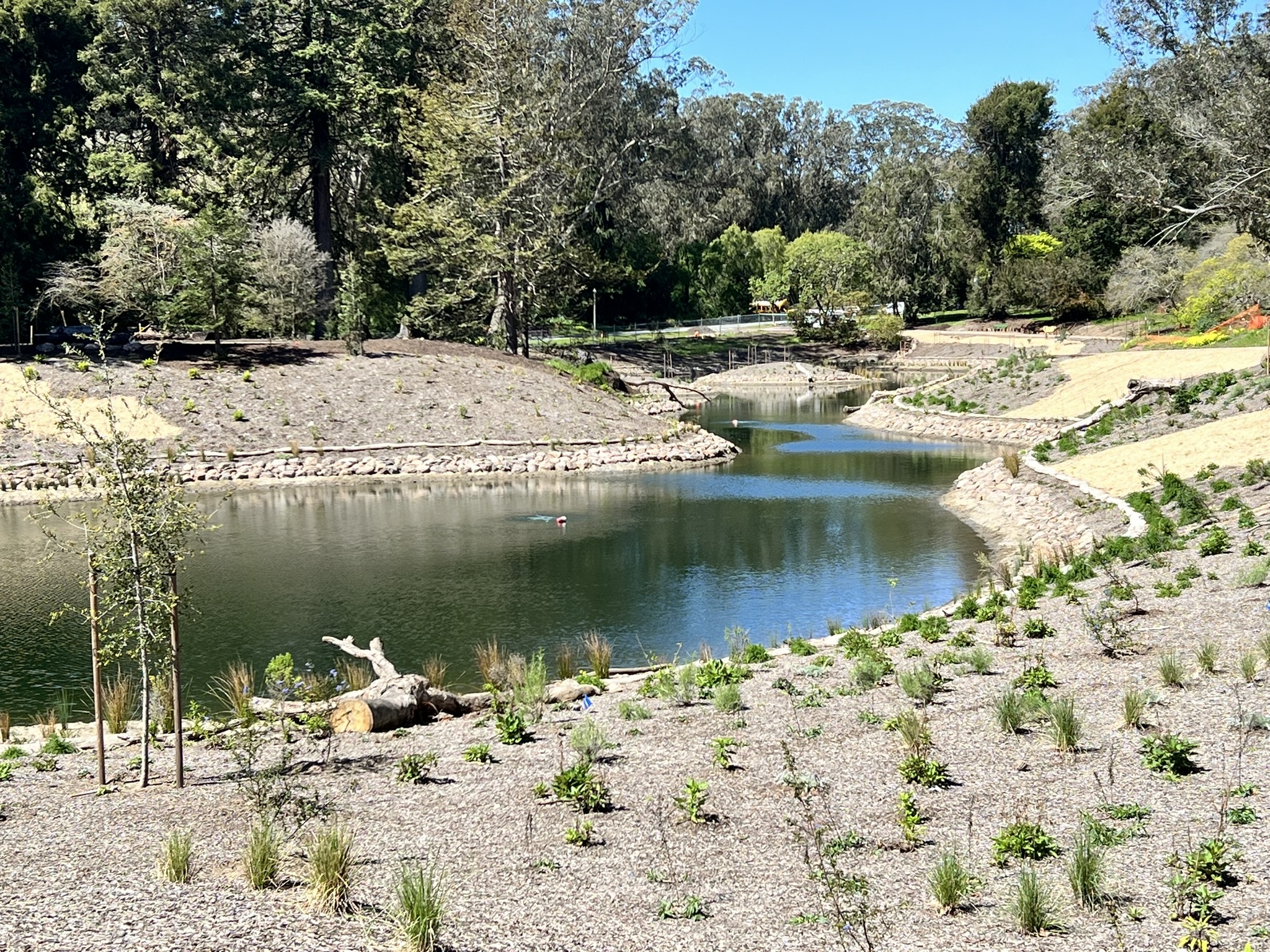
Middle Lake is Rising!
Spring is here and Middle Lake is almost complete and the water level is rising. Now home to aquatic plants, nesting birds and some 12,000 new plants including over 80 native species of trees and understory plants. Soon San Franciscans will be able to stroll around the lake’s edge, over two bridges and along a new cascade within a flowering pacific dogwood grove.
Come visit this summer to enjoy a stroll on the mile long loop trail, a contemplative vista from one of the numerous benches along the lake’s edge, or unroll your picnic blanket on a nearby lawn and listen to the chatter of the birds.
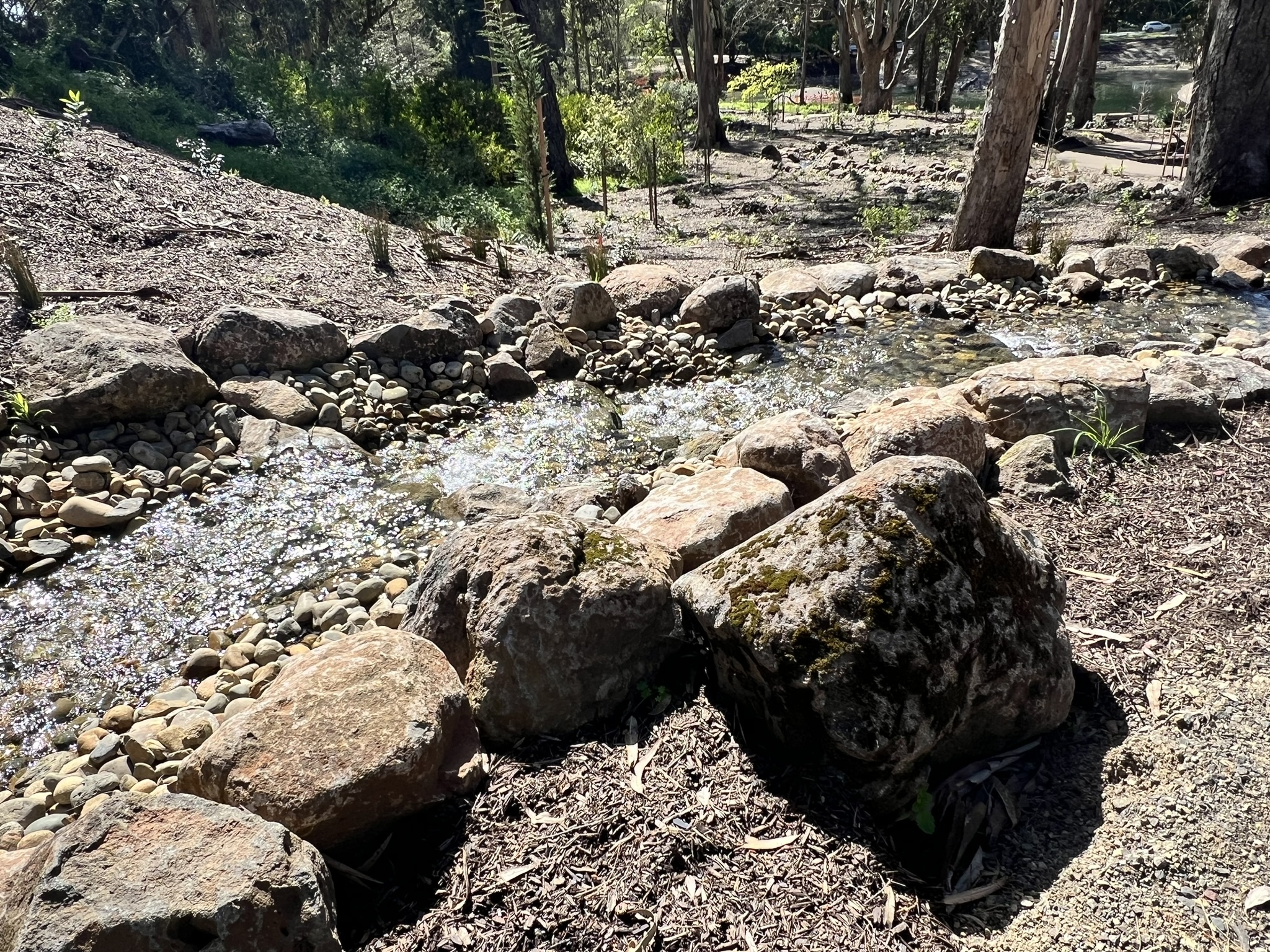

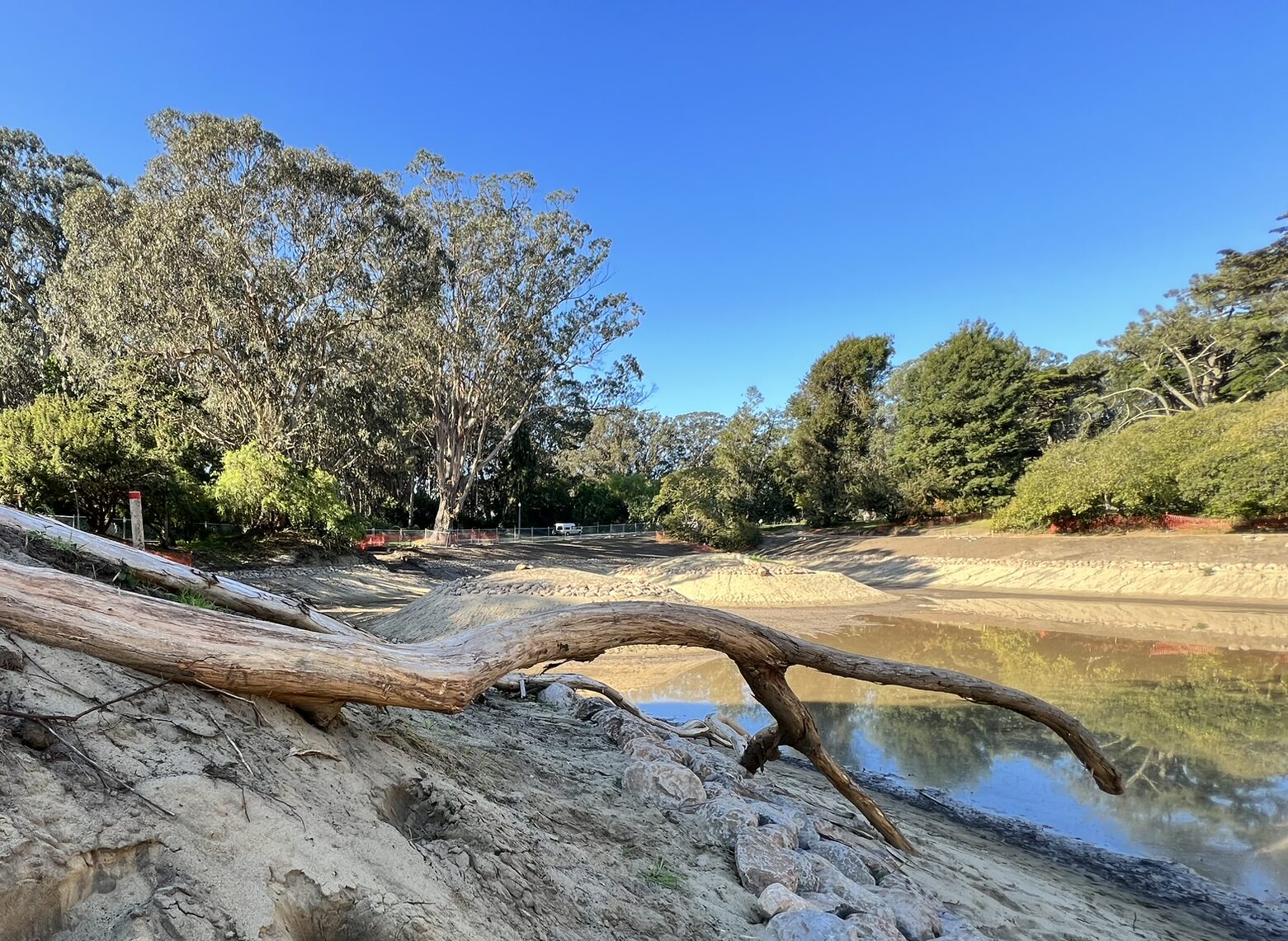
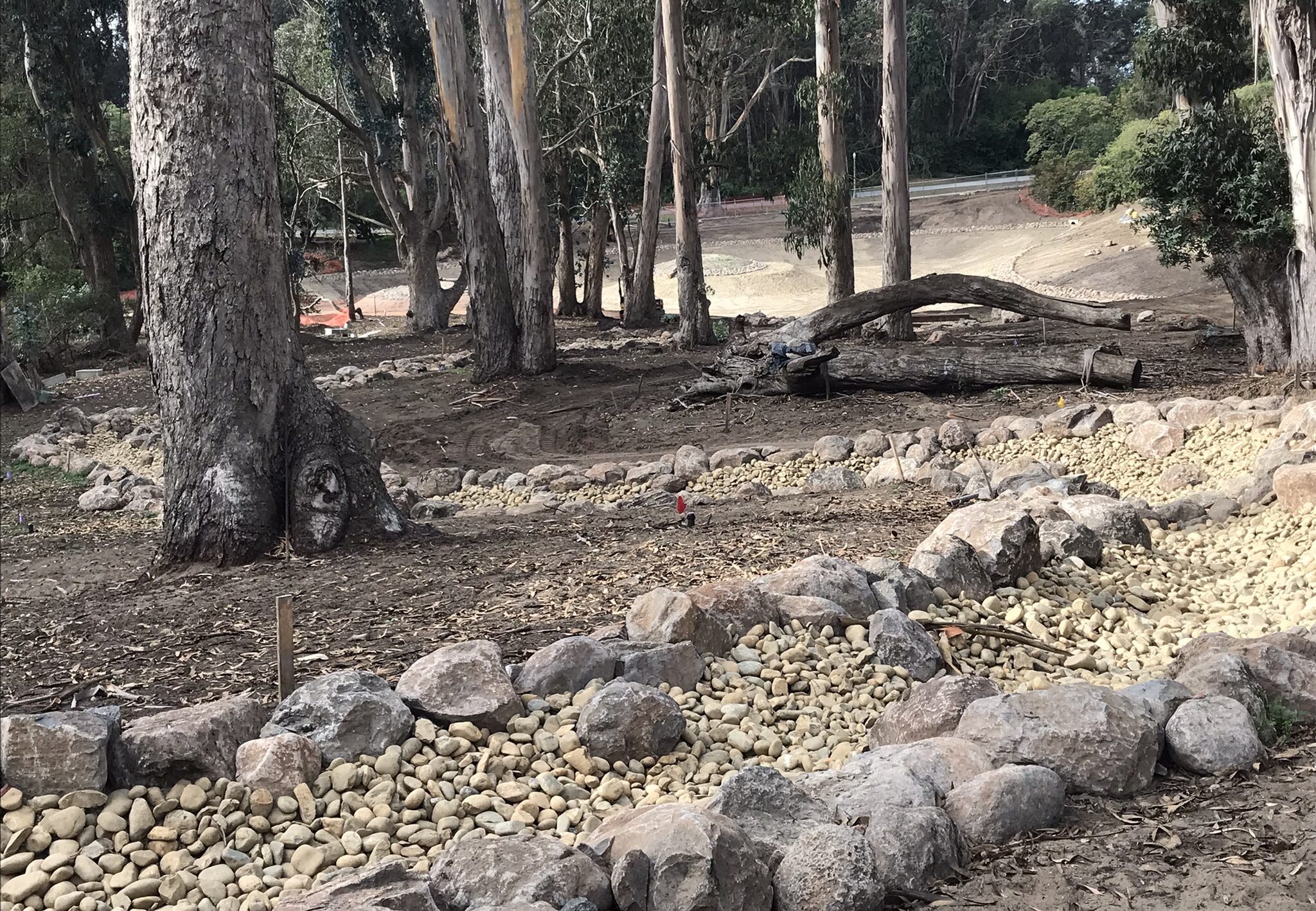
Golden Gate Park’s Middle Lake – Breaks Ground
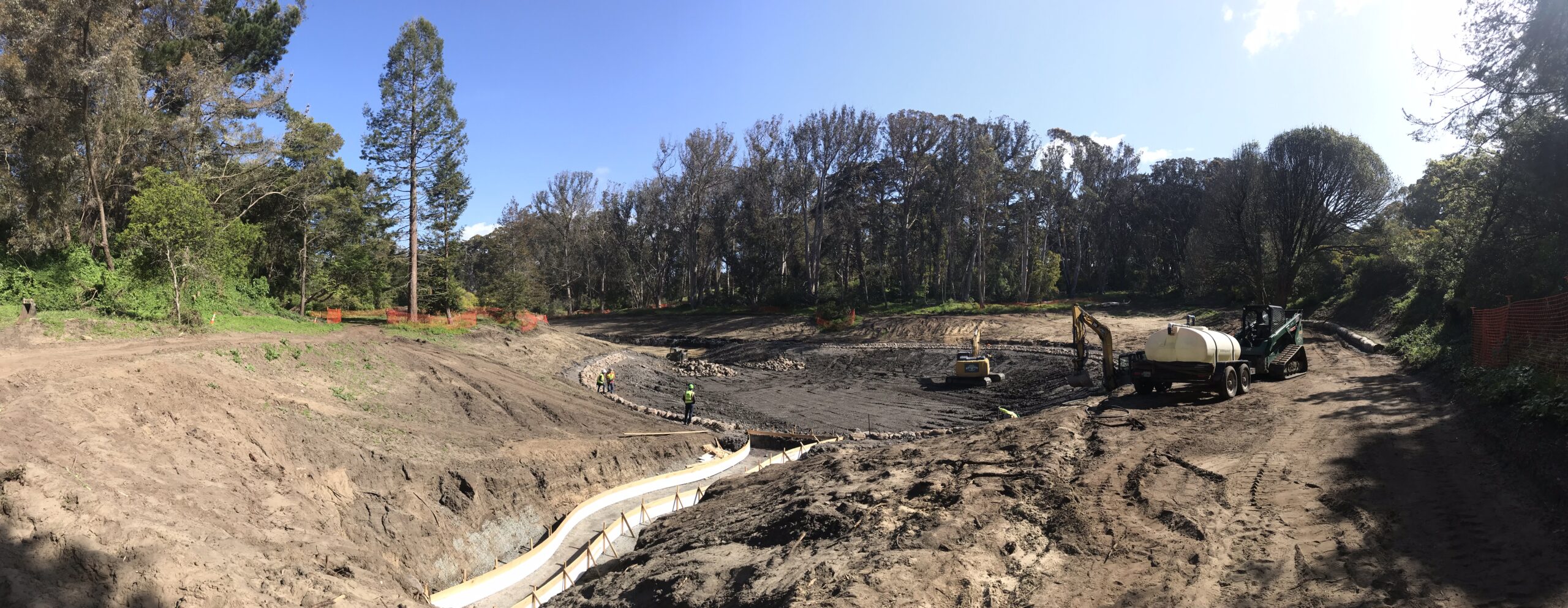
INTERSTICE is proud and excited to be part of the team that is undertaking the restoration of a critical piece of green infrastructure in Golden Gate Park; we are re-building Middle Lake. This freshwater lake is one in a series of three lakes called the Chain of Lakes, which flow north from South Lake, to Middle Lake, and into North Lake at the western end of the park. The original design & construction of these lakes dates back to 1898 and all required a clay liner to hold water over the ancient sand dunes that underlie the park.
Following a year plus long design process, construction of the project began in the early months of 2023 with the selective removal of certain trees and the protection of many other existing mature trees in preparation to rehabilitate the lake.
INTERSTICE, as the landscape architect, is working with Civil Engineers AGS and Woodard & Curran, overseeing the new lake design installation to achieve improved accessibility and enjoyment for park visitors, and a diverse plant and aquatic ecology that will provide improved habitat for insects, birds, amphibians, reptiles and mammals that constitute the spectrum of the wildlife that inhabits and moves through Golden Gate Park. Bauman Construction is the General Contractor leading the construction effort working with the SF Recreation & Parks Department and SF Department of Public Works.
This significant undertaking includes replacing the clay liner lake bottom and increasing the water depth, clearing the pipes connecting Middle Lake to South and North Lakes, and rehabilitating the rock cascade that connects to the Fly Casting Pools.
The new design includes a perimeter loop trail that bridges the cascade, significant and diverse native and aquatic plantings surrounding the lake, furnished seating areas with lookouts along the new pathway which encircles the lake and climbs the slope beside the cascade. The future plantings include over a dozen native tree species, over50 species of native understory plants, including shrubs, groundcovers, grasses, rushes and aquatic and riparian species located at the lakes edge.
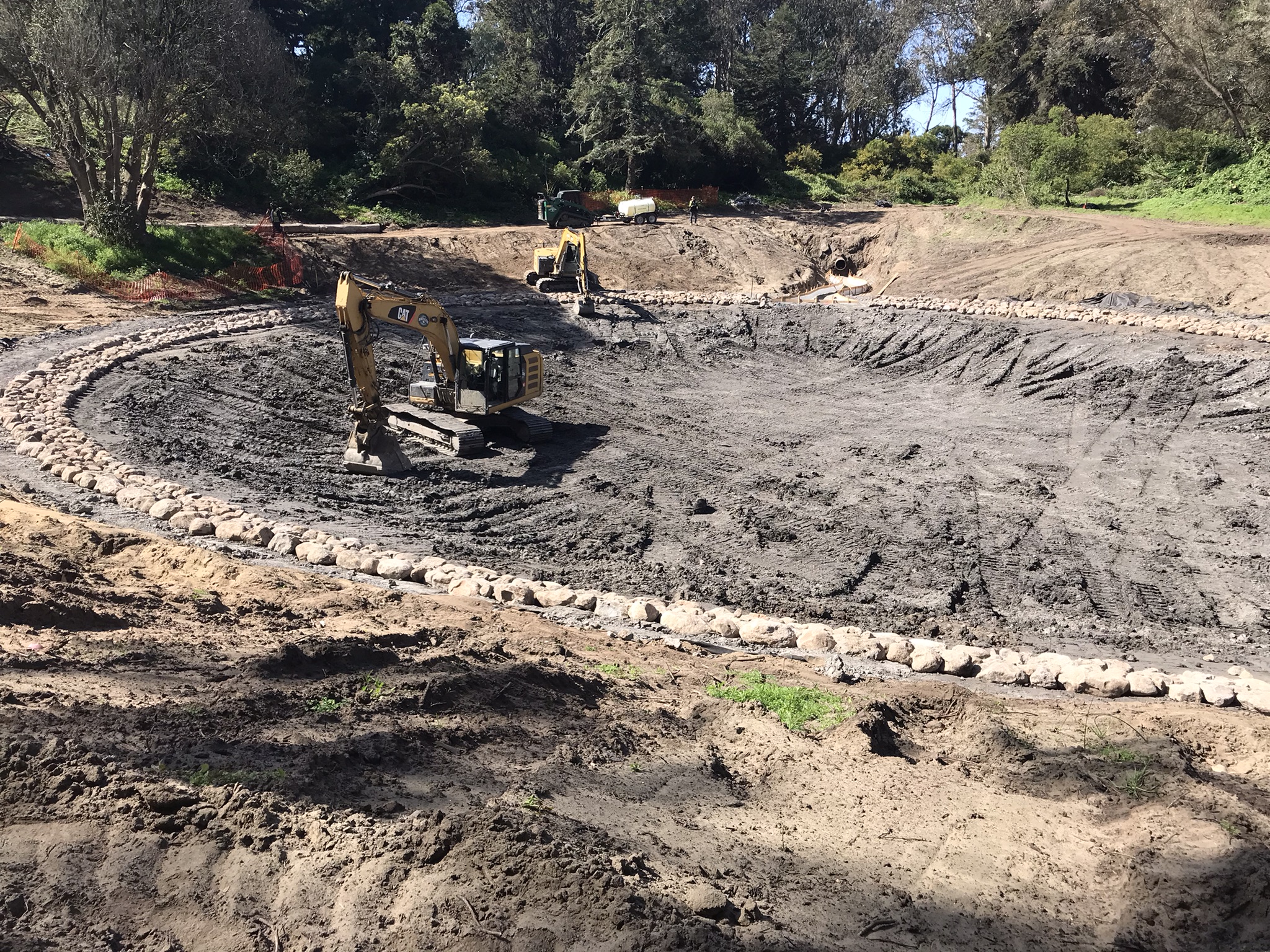
The establishment of the clay liner and lake edge are the first phase and significant part of the work.
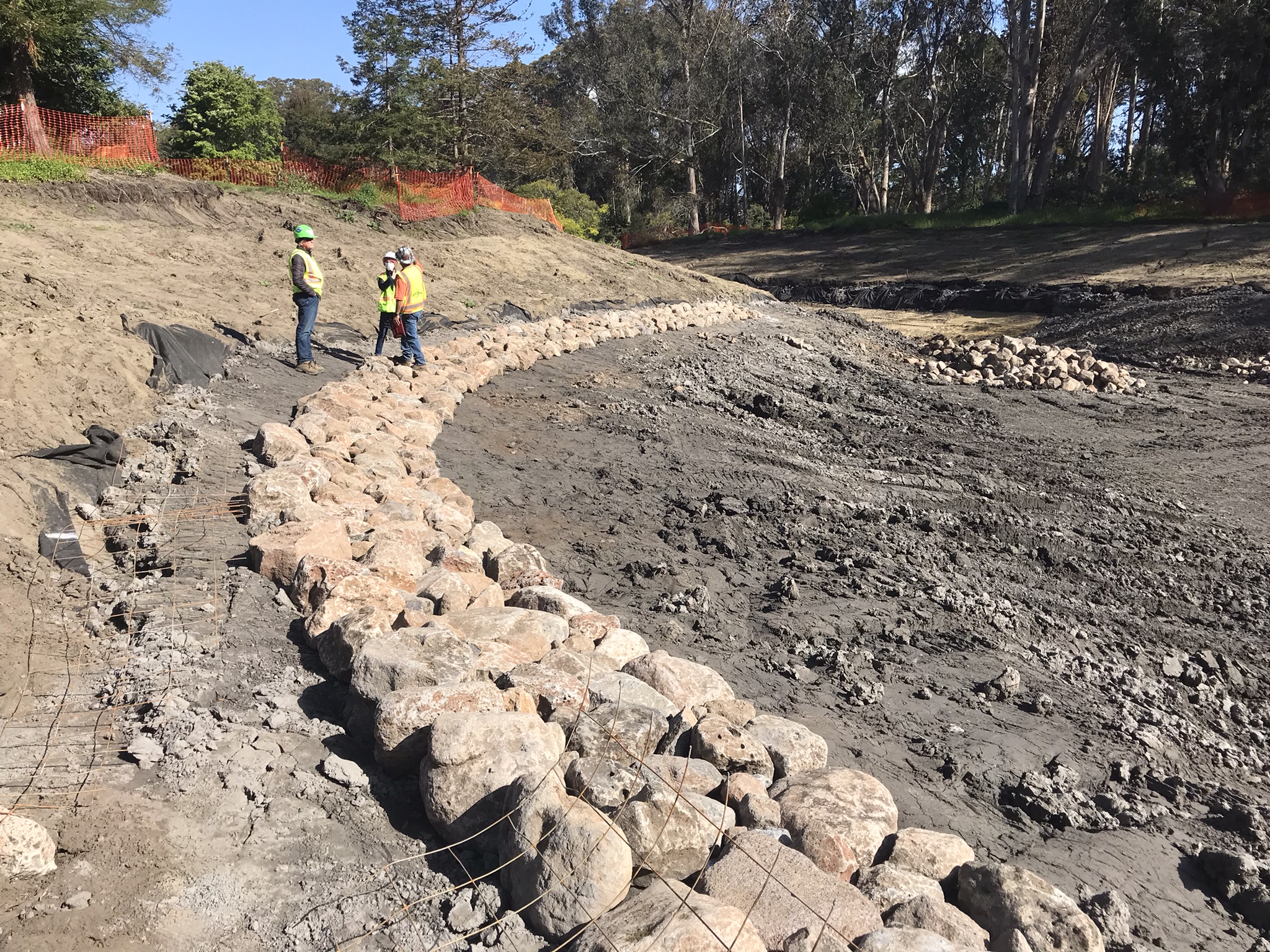
Boulder mock-ups for the lake edge perimeter.
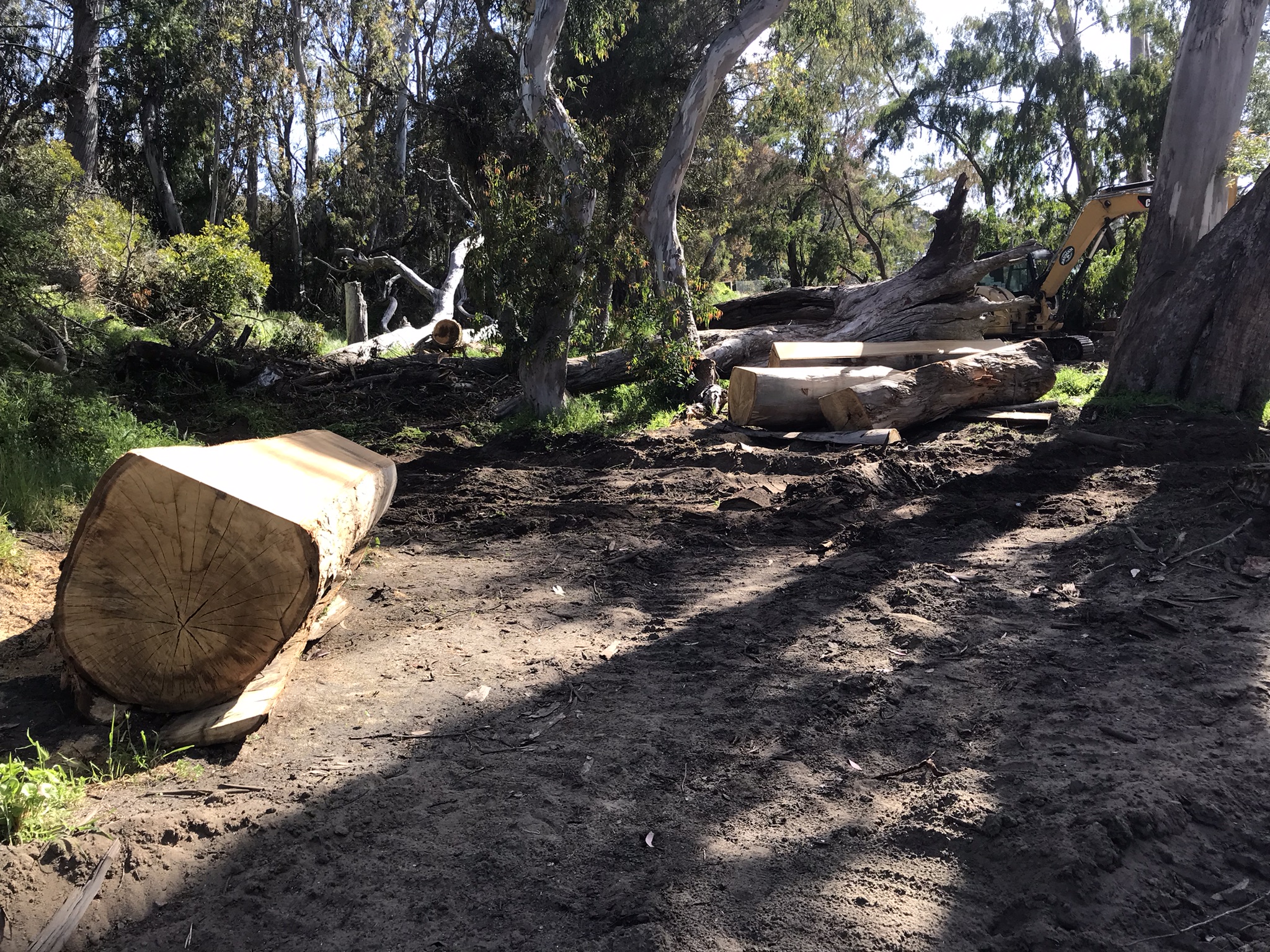
New furnishings being crafted from salvaged trees that were planned for removal or came down in this winter’s storms.
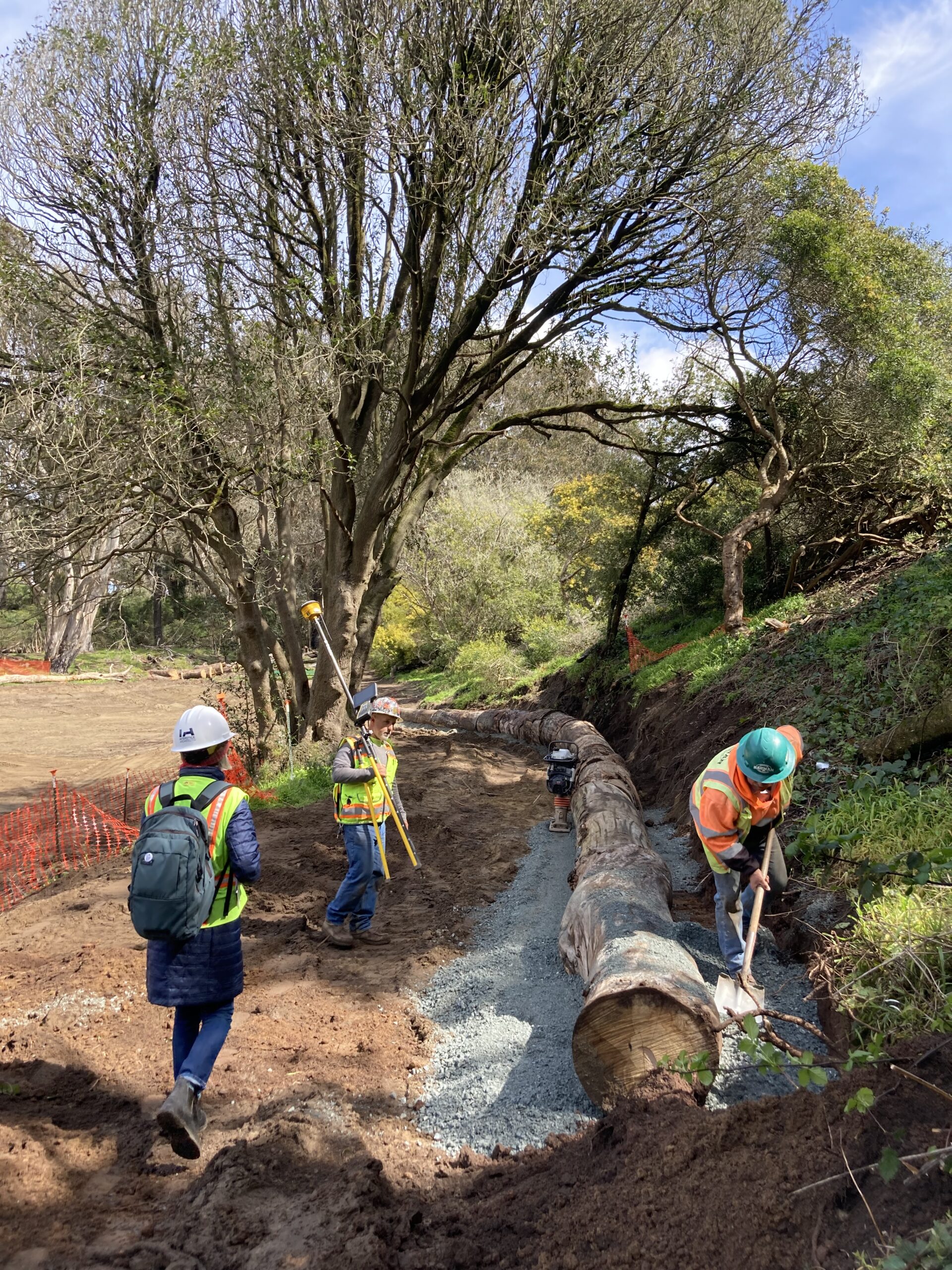
We look forward to sharing more progress as the liner is completed and the lake starts to take shape this Spring.
IA Team Volunteers in the Presidio
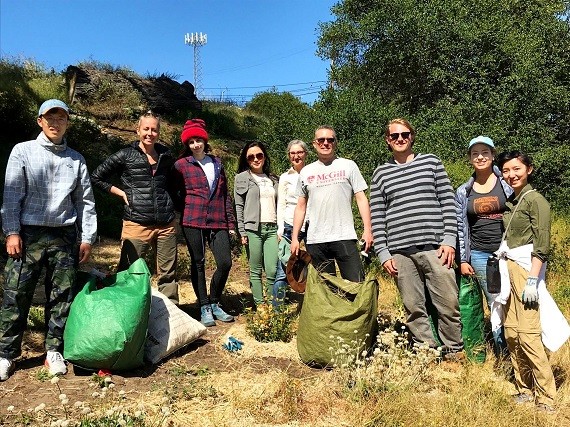
Recently, INTERSTICE switched up their usual routine by getting outside and getting involved. They headed due north to work with Golden Gate Parks National Conservancy on a habitat restoration project in The Presidio. The project was located at Wherry Corridor, a narrow section of natural habitat threading between man-made structures. For the past 15+ years, the Golden Gate Parks National Conservancy has been nurturing this area back to a healthy landscape filled with native flora and fauna. INTERSTICE assisted with watering and weeding new growth and removing invasive plant species. Not their first volunteering project in the Presidio, INTERSTICE once again enjoyed the opportunity to improve their local habitat.
PARK(ing) Day 2017 – Mirror Mylar Forest-Field
PARK(ing) Day 2017 – Mirror Mylar Forest-Field: Pedestrian Safety Along the Polk Corridor
For Park(ing) day 2017, INTERSTICE Architects created an interactive Park(ing) Day installation on Polk Street at Hemlock Alley. Visitors experienced the wind-activated Mirrored Mylar Forest to explore questions of pedestrian safety and share their experiences of being a San Francisco pedestrian. Which spaces are prioritized for pedestrians? Where is there room for improvement?
Recording individual experiences as a pedestrian, cyclist or driver, the public was asked to register their information directly onto the installation surface. An enlarged a map of the Polk Street Corridor [built from data collected from the California Highway Patrol & highlighting pedestrian-related traffic incidents] created the “ground” for discussion. This interactive pedestrian Park(ing) map evolved throughout the day as a palimpsest that visitors could walk through – orienting themselves within the parking space, the neighborhood, and the city streets.
The installation was inspired by the Polk Streetscape Improvements recently underway and INTERSTICE’s collaboration as part of an initiative to enrich The Lower Polk Alleyways District. The new Lower Polk Alleyways Vision Plan (LPADVP) recently adopted by the Lower Polk Neighbors, proposes a future vision for the 12 blocks of alleyways located within the boundaries of the Lower Polk Neighborhood. INTERSTICE Architects guided this community-driven process which has resulted in a unique community-initiated set of strategies and guidelines designed to understand these alleyways, not as singular back-streets or isolated funding opportunities, but instead to consider them as a whole – as a District.
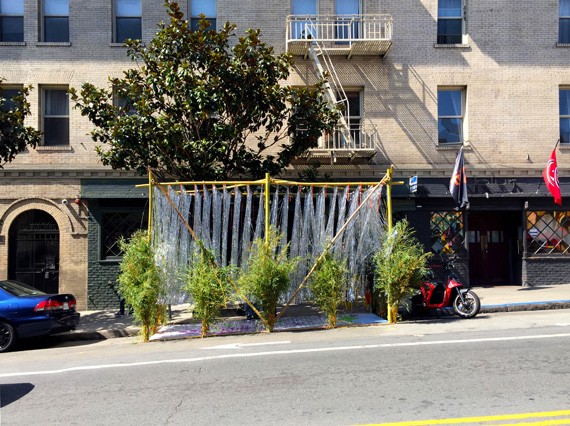
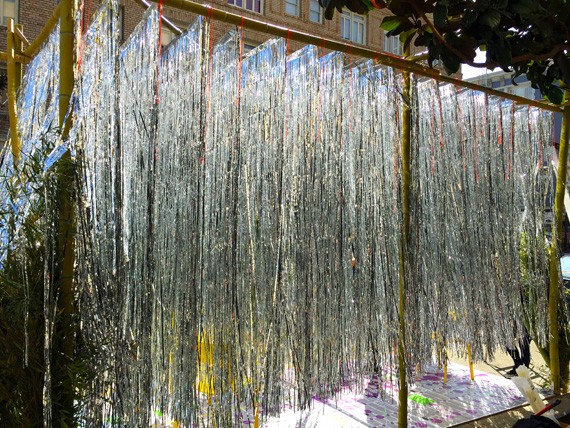
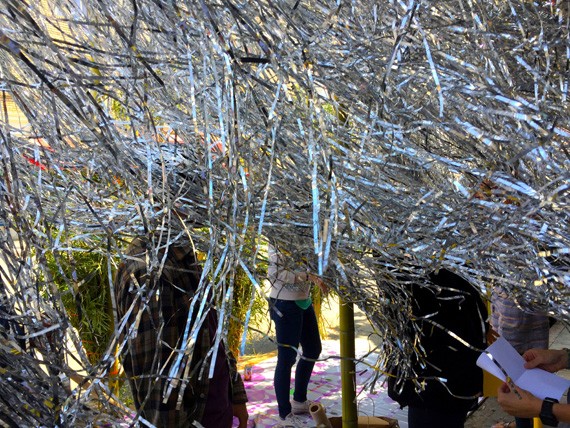
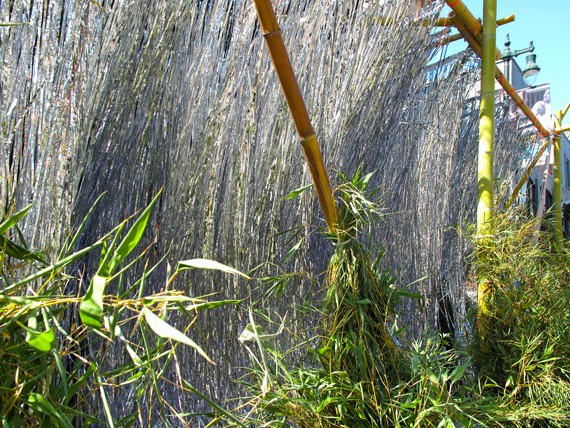
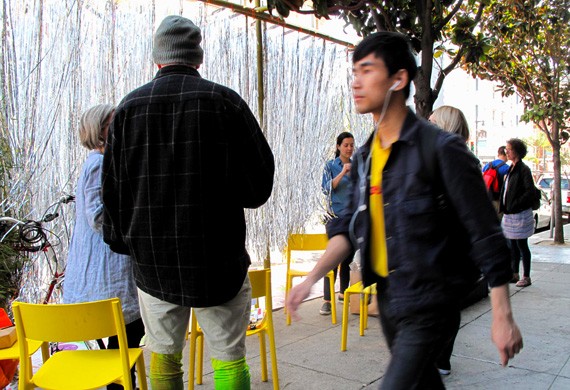
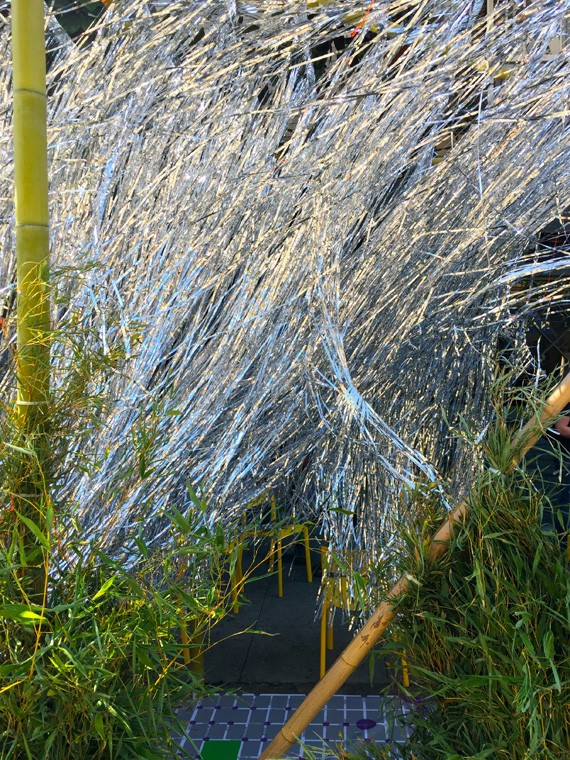
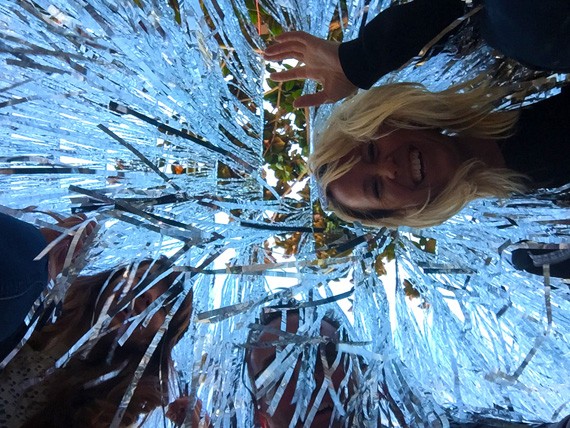
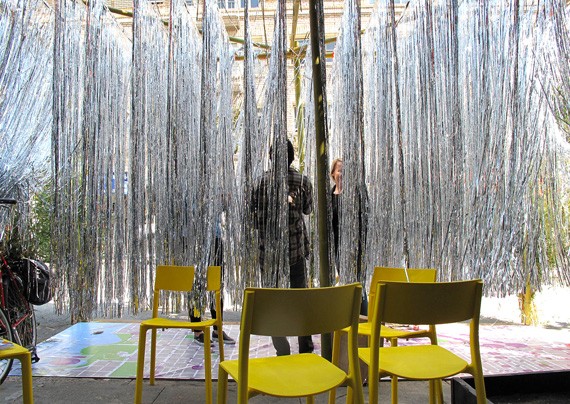
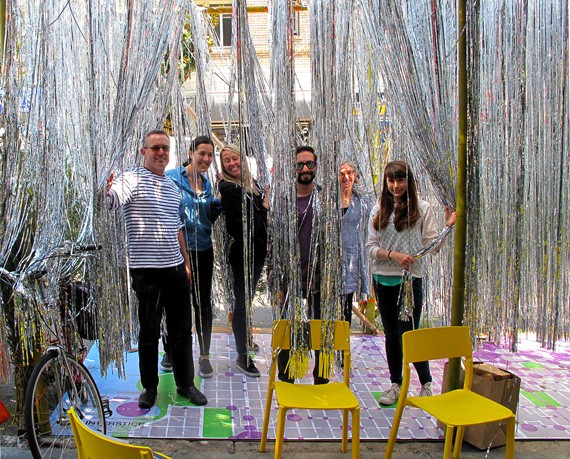




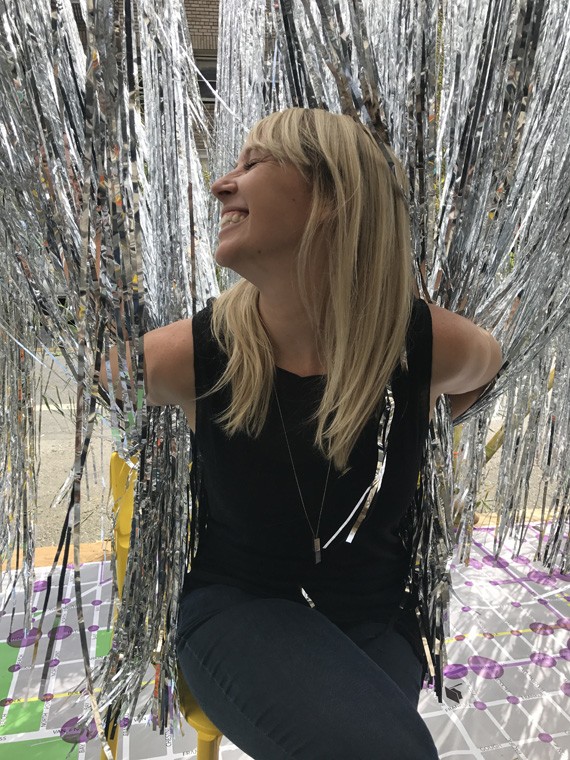
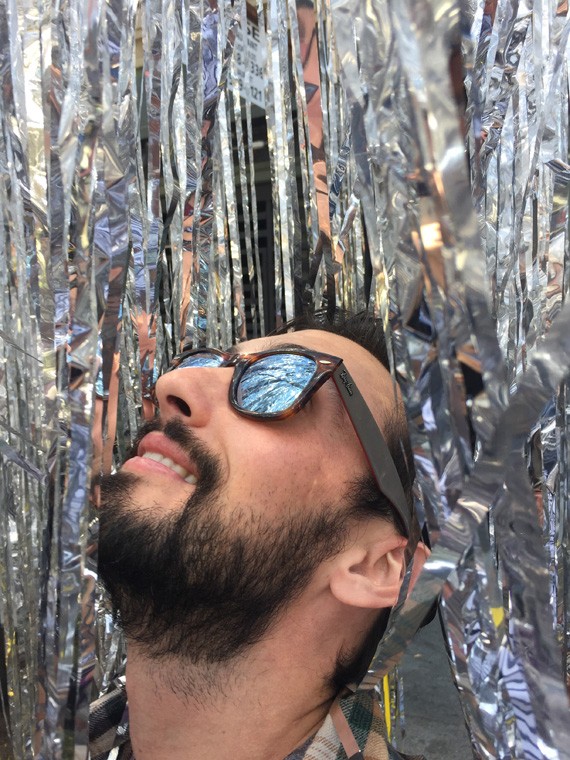
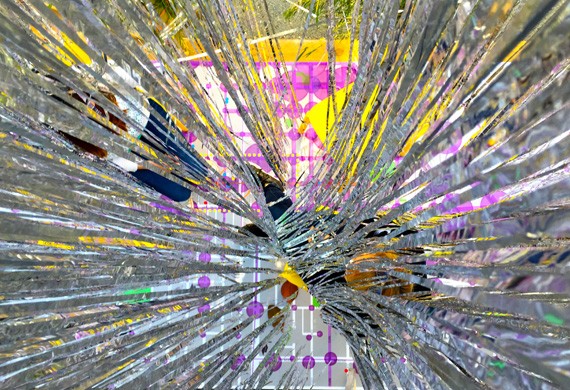
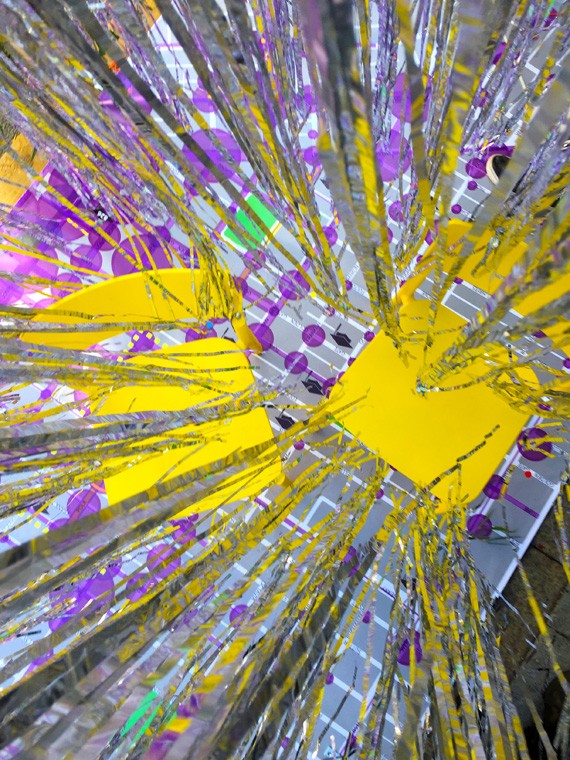
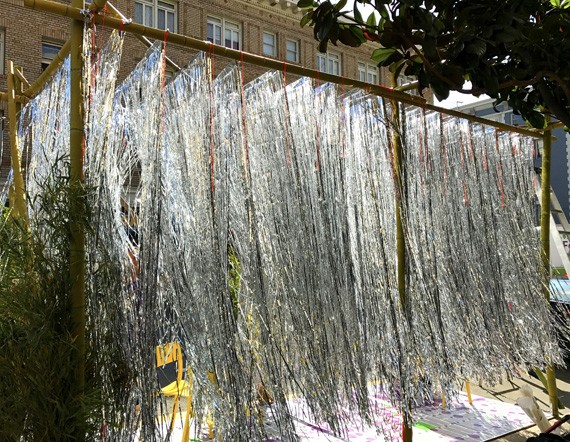
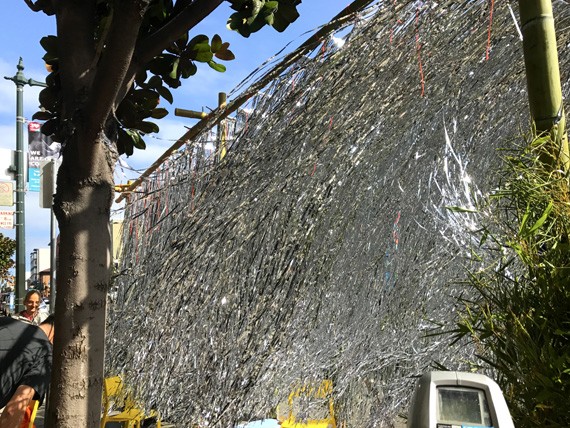
IA wins 3 Merit Awards at 2013 ASLA NCC Awards

We’re pleased to share that IA received 3 awards in this year’s ASLA Northern California Chapter Design Awards! We were awarded 3 Merit Awards for our work on the 555 Bartlett Courtyard, Bay Area Remediation Site: 1, and the San Francisco Botanical Garden Pathway Improvements. You can see our award winning projects on the ASLA NCC website.
INTERSTICE Architects 'Digs In' at the SF Botanical Garden
Check out the pictures from our volunteer day at the San Francisco Botanical Garden – IA spent a day helping SFBG Gardener Jason Martinez weed, aerate and plant a grove of Rhododendrons in a section of the Mediterranean Basin known as Heidelberg Hill. If you’re interested in volunteering your time to assist the SFBG, check out their website – the Garden relies heavily on volunteers like yourself to assist them in a variety of different ways, and no prior gardening experience is required!
INTERSTICE Architects in arcCA
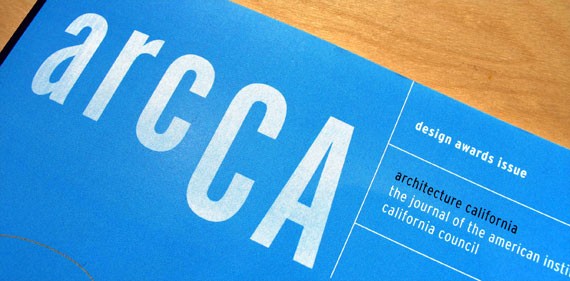
INTERSTICE Architects’ project ‘Bay Remediation Site: 1″ has been published in arcCA’s Winter 2012 Design Awards Issue! BRS:1 won an AIACC Urban Design Merit Award earlier last year, and the issue features our project as well as all the other AIACC award winners. This is BRS:1’s fourth award in the last 3 years, having previously received awards from the California Architectural Foundation, AIA San Francisco, and an international Green Dot Award for sustainability. You can check out the project on page 46.
Bay Remediation Site: 1 Published in Landscape Architecture Magazine
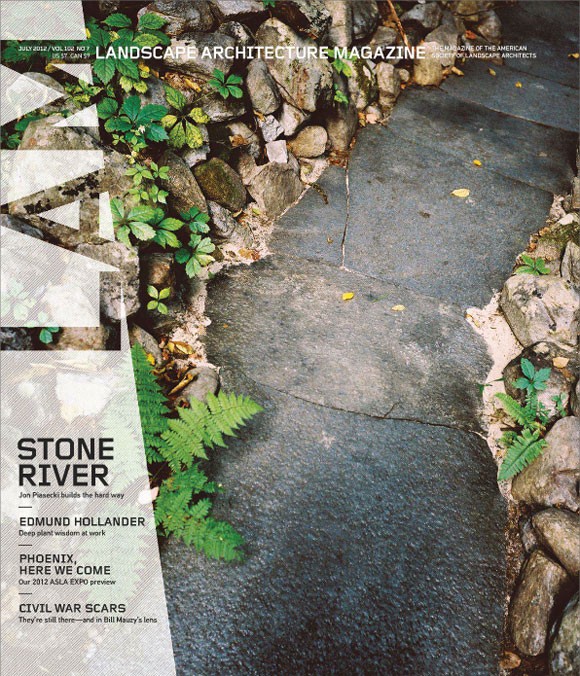
We’re pleased to share that our project “Bay Remediation Site: 1” has been published in on page 38 of this month’s issue of Landscape Architecture Magazine! The article features an interview with IA’s Andrew Dunbar and Zoee Astrakhan, and illustrates how the project investigates our office’s critical interest in blurring the lines between landscape, architecture, and infrastructure in order to create smarter systems that both rehabilitate our environment and create positive public spaces.
As discussed in the article, we believe there could be potential for projects such as BRS:1 to transition from the realm of theory to reality by gaining traction with local and state governments After the introduction of New York’s High Line, the collective interest of cities across the country to invest in green, urban, public spaces has been piqued. San Francisco is no stranger to this phenomenon – with the renovation of the SF/Oakland Bay Bridge being the city’s primary focus of a plethora of design proposals. As interesting as many of these ideas are, we believe that the project of “Green-Space-as-Destination-Infrastructure” could move beyond purely reclaiming derelict infrastructure for the purposes of tourism and urban revitalization.
Spanning hundreds of miles of coast line, “The Bay” is easily San Francisco’s most significant geographical characteristic – one that is deteriorating due to factors such as water pollution, environmental loss, and global climate change. We hope that BRS:1 can function as an in-road to discussing the potential benefit landscape infrastructure can have to creating destination green spaces that not only draw people and prestige to the city, but rebuild our coastal environment and foster community involvement and educational opportunities as well.
Park(ing) Day 2011: paARRRRrk-let!
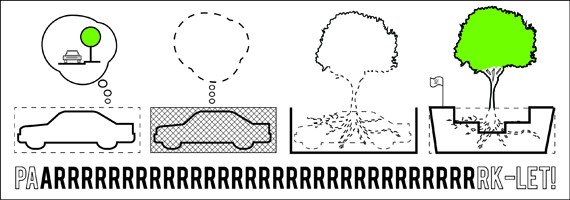
Come join Interstice Architects in front of 826 Valencia in the Mission for Park(ing) Day San Francisco 2011!
The volume of just one parking space is 800 cubic feet – which is equivalent to the minimum soil required for an urban tree to thrive. Using recycled wood palettes, we are installing a temporary story space/nursery, and in deference to the corsair spirit of our friends at 826 Valencia, our paarrrrk-let prototype will proclaim our proclivity for parking-space piracy in proper privateer practice. The parklet re-uses a waste stream material to create a multi-tiered space for people to lounge ‘on deck’ in the shade of an urban tree. The space defined by the outer edge of the pallets represents the soil the tree needs to develop a healthy and stable root system.
Our parklet illustrates not only how a parking spot can be transformed into an urban nursery, but how a temporary nursery space for a tree can also become a community social space. Tapping into our interest discussed in former posts regarding our research into Public Green Networks, we envision a system of both permanent and temporary urban nursery spaces that add a new dimension of verdant social space to the evolving ‘green’ urban fabric of the city. More on this idea in posts to come.
So please, make sure to stop by our paarrrrk-let and check out our park(ing) day page on the Parking Day DIY Network, where you can find mapped locations for parking day installations across the city, and take a look at all the different people and organizations participating in Park(in) Day this year! We would like to extend a special thanks to Rebar for their excellent organization of the worldwide event, and for starting this great tradition 6 years ago!
USF Center for Science and Innovation & Harney Plaza Featured in Architect's Newspaper
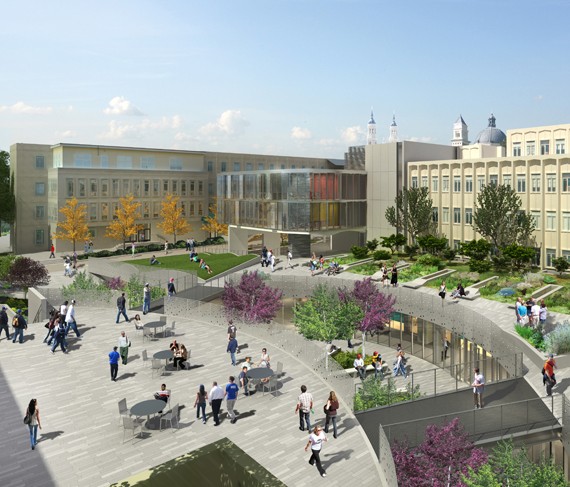
The Architect’s Newspaper’s January West Coast edition has published Interstice’s work on of the USF Center for Science and Innovation and Harney Plaza. In its feature article “Budding Relationships” (page 13), editor Sam Lubell discusses new approaches to building that merge landscape and architecture, and includes several new projects going up in California that follow the trend of “soil-meets-steel,” which has prompted “architects and landscape architects to collaborate more closely, and occasionally, even to reverse roles.” The USF CSI & Harney Plaza, which Interstice worked on in collaboration with NBBJ Architects, was included in the article’s trending survey of projects, as well as an interview with Interstice’s Zoee Astrakhan.

